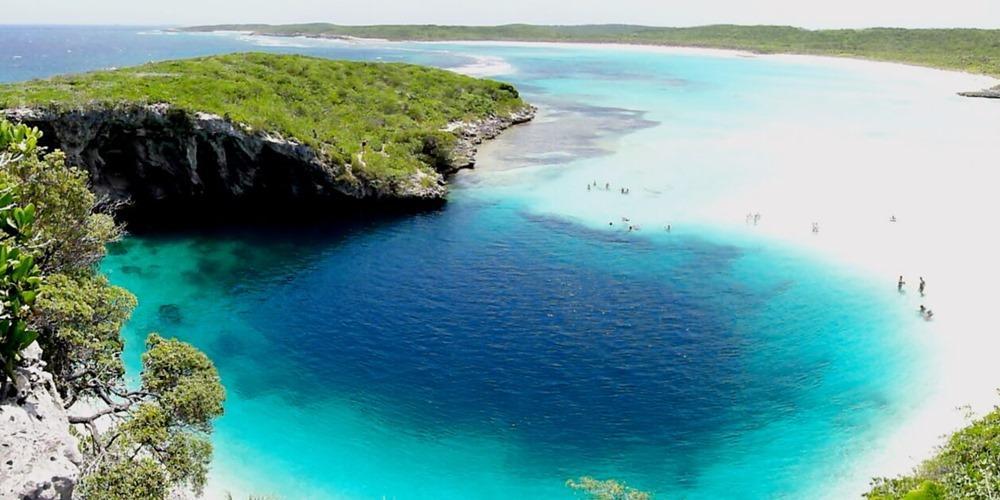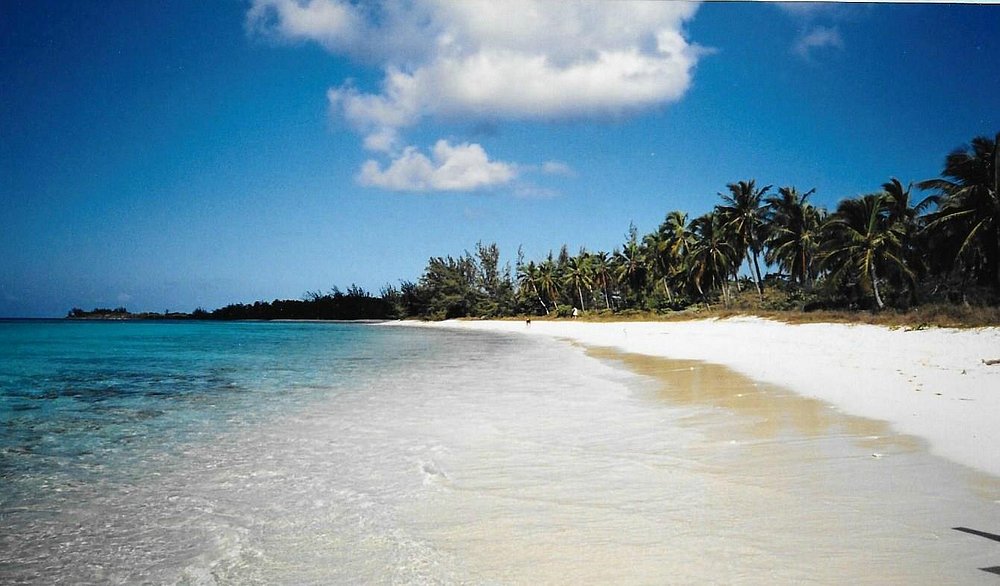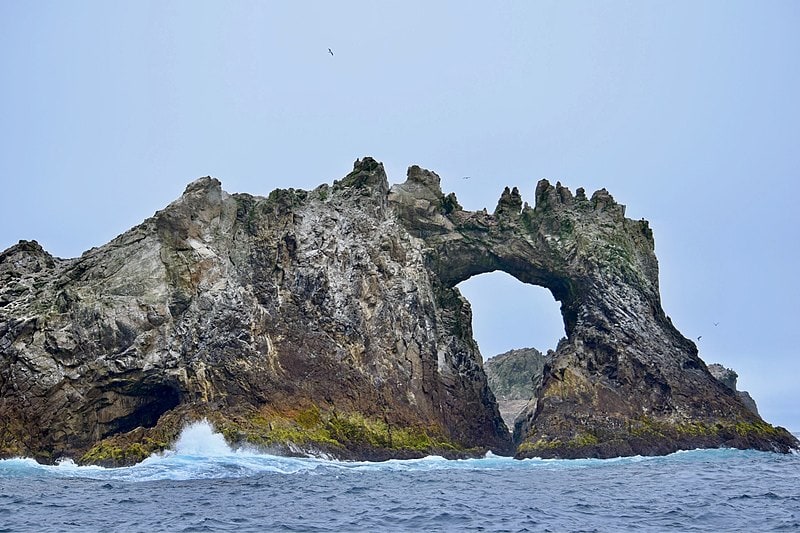If you are looking for an unusual destination in the Bahamas, the island of Gran Inagua is a little explored jewel that will surprise you. Far from mass tourism and luxurious resorts, this island is a natural sanctuary where biodiversity is the protagonist. Here, wildlife coexists in perfect harmony with the environment, offering an authentic experience for those looking for tranquility, connection with nature and unforgettable landscapes.
Gran Inagua is the third largest island of the Bahamian archipelago, located in the south of the country, very close to Cuba and Haiti. Its geographical isolation has favored the preservation of unique species, especially birds. Pink flamingos, Bahamian parrots, hummingbirds, herons, pelicans and seagulls are among its most representative winged inhabitants. Thanks to this, it has become an ideal destination for lovers of ecotourism and wildlife observation.

In this article you will discover what to see in Gran Inagua Bahamas, from its nature reserves to its virgin beaches. You will also learn more about the species that inhabit it and how you can enjoy ecological tourism in Gran Inagua in a responsible way.
What to see in Gran Inagua Bahamas
One of the greatest attractions of the island is the Inagua National Park, a vast ecological reserve that occupies more than half of the island territory. This park is home to the largest pink flamingo colony in the Western Hemisphere, with more than 60,000 specimens. Seeing these birds gathered in the salt pans of the island is a natural spectacle that leaves you breathless.
In addition to the park, another must-see is Lake Rosa, also known as Lake Windsor. This huge salt lake is not only a refuge for flamingos, but also for other waterfowl that migrate from North America during certain times of the year. It is one of the best places to observe exotic birds in the Bahamas.
Whether your thing is hiking or simply enjoying serene landscapes, the National Trust Trail is an excellent option. This ecological trail allows you to enter the native vegetation, cross swampy areas and discover small ecosystems that change with the passage of each season.
Another recommended activity is to visit the East Point Farallón, a remote place where the waves break against rocky cliffs. It is ideal for those looking for a postcard different from the Caribbean: without tourist beaches, but with a wild beauty that impresses.
Of course, the beaches of Gran Inagua also deserve a special mention. Although there are not many, they stand out for their virgin appearance and tranquility. You won’t find colorful bars or umbrellas, but you will find white sands, turquoise waters and, hopefully, no one else around.
A paradise for watching exotic birds in the Bahamas
Gran Inagua is synonymous with biodiversity, and especially birds. The presence of salt habitats, lagoons and mangroves has made the island a meeting point for many winged species that inhabit the Caribbean or that migrate from other continents.
The undisputed star is the pink flamingo, whose elegant silhouette and vibrant color dominates the landscape of the national park. These birds nest and breed on the island, which offers a unique opportunity to see their natural behavior up close.
Another prominent species is the Bahamian parrot, also known as Amazona leucocephala bahamensis. It is an endemic subspecies of Gran Inagua, easily recognizable by its intense green plumage and its white head with reddish touches. Listening to his singing while traveling in a group through the dry forest of the island is an unforgettable experience.
Caribbean hummingbirds, with their fast flight and iridescent plumage, also abound on the island. They can be seen especially in areas with wildflowers, where they feed on nectar throughout the year. Next to them, seagulls, blue herons, white ibises, and even brown pelicans complete this paradise for the observation of exotic birds in the Bahamas.

The combination of coastal and terrestrial habitats makes Gran Inagua a privileged place for birdwatching, ideal for both experts and curious travelers.
Ecological tourism in Gran Inagua: an authentic experience
Gran Inagua is not a destination for those looking for nightlife, shopping centers or hotel chains. This island is for those who want to reconnect with nature, for those who prefer the sound of the wind between the trees to the bustle of the city. Ecological tourism in Gran Inagua is the main reason why many travelers decide to explore this remote corner of the Bahamas.
One of the most respectful ways to get to know the island is through guided tours by local naturalists. These excursions not only take you to the most emblematic points of the national park, but also offer detailed information about ecosystems, endemic species and conservation efforts that are being carried out. It is common for guides to share anecdotes about how the community works together to protect its natural heritage.
Another notable aspect of ecotourism in this region is its focus on environmental education. Visitors not only enjoy the landscape; they also learn about the importance of maintaining ecological balance, reducing human impact and respecting the habitat of the thousands of birds that consider Gran Inagua their home.
In addition, the tourist infrastructure here is minimal, which drives a more conscious way of traveling. Instead of large hotels, you will find small family inns and basic but cozy accommodations. Some even run on solar energy, collect rainwater or apply recycling practices. This low ecological footprint makes each visit contribute positively to the sustainability of the destination.
If you are a lover of nature photography, this place will fascinate you. The soft light of dawn falling on the salt flats, the flamingoes reflecting in the water or the synchronized flight of a flock of parrots are moments that deserve to be immortalized. But always with respect: here, the motto is to observe without disturbing.
Tips for visiting the island and how to get there
Planning a trip to Gran Inagua requires a little more preparation than other more popular tourist destinations in the Bahamas, but the reward is totally worth the effort. Here are some key tips to get the most out of your adventure.
- Getting to Gran Inagua:
Access to the island is limited, which helps preserve its exclusive character. The most common route is to fly from Nassau to Matthew Town, the only town on the island, via domestic flights operated by local airlines. It is also possible to arrive by private boat, but prior coordination and customs authorization are required.
- When to travel:
The best time to visit is between November and April, when temperatures are milder and rains less frequent. In addition, it is when more migratory species are concentrated, ideal for fans of bird watching. During the summer, although warmer, the landscape remains impressive, especially after the rains that revive the vegetation.
- What to bring:
It is important to pack light and breathable clothing, ecological sunscreen, hat, insect repellent and comfortable footwear for walks. Don’t forget binoculars and a camera with a good zoom if you want to make the most of sighting opportunities.
- Respect for the environment:
As a visitor, you are expected to maintain a responsible attitude. It is not allowed to feed the animals, or take out plants or rocks as a souvenir. In addition, waste must be taken back with you or disposed of properly in the enabled areas.
- Communication and services:
Mobile phone coverage may be irregular outside of Matthew Town. Some accommodations have basic Wi-Fi, but it is advisable to download maps and guides in advance. This, far from being an inconvenience, contributes to you disconnecting and immersing yourself completely in the environment.
Conclusion: a hidden treasure that is worth every step
Exploring Gran Inagua is diving into one of the few places in the Caribbean where nature rules. Here, the landscapes are not made to be seen from a pool with a cocktail in hand, but to be walked, with the senses attentive and the heart open.

Knowing what to see in Gran Inagua Bahamas is only the first step; living it is something else. It is to be surprised by the sound of a flamingo when taking off, by the plummeting flight of a hummingbird, or by the silent immensity of the salty lake. It is to understand that there is another way of traveling, slower, deeper and more respectful.
It is not the simplest or the most comfortable destination, but it is one of the most authentic. And when you come back, you do it with something more than just photographs. You take the memory of a virgin paradise, learning about the importance of preserving the natural, and the certainty of having stepped on a really special place. More information for to travel to Bahamas in this article.